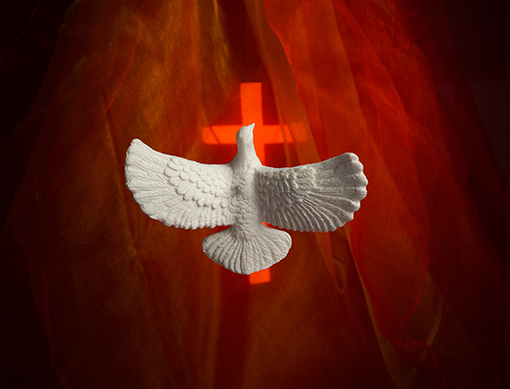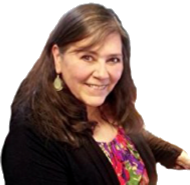“We are an Easter People!”
 That phrase was used by St. Pope John Paul II to describe the People of God, filled with joy and faith because of Christ’s Resurrection.
That phrase was used by St. Pope John Paul II to describe the People of God, filled with joy and faith because of Christ’s Resurrection.
If we follow what happens to the Apostles and the Church after the Resurrection, we could also exclaim, “We are a Pentecost People!” That means we are a people powered by the Holy Spirit.
In a Pentecost Sunday homily, Pope Francis reminded the faithful that on Pentecost, the Holy Spirit transformed “timid disciples from fearful men, ‘huddled behind closed doors,’ to bold men who ‘bear witness to [Jesus]’.”
He was describing what happened following Jesus’ Resurrection, when the Apostles were often behind locked doors, afraid of the Jewish authorities. It was here that Jesus appeared to them for the first time.
During the next forty days, though Jesus continued to appear to them, some of the Apostles went back to their old lives as fisherman. On one occasion, Jesus appeared and told them not to leave Jerusalem but to wait for “the promise of the Father,” which Jesus had spoken about.
I often wondered if he got wind of some of them planning to leave town!
It was after the Apostles witnessed Jesus’ Ascension that things began to change. They gathered together in the Upper Room, with Mary and some other women, to pray. They probably remembered Jesus’ promise that the Holy Spirit would come after Jesus went back to his Father.
It was then that the Holy Spirit arrived in wind and tongues of flame, transforming the ordinary disciples of Christ into bold, courageous proclaimers of the Gospel. On that day, Peter, once a fisherman with no higher education, the Apostle who, motivated by fear, denied he even knew Jesus after Jesus was arrested, rose to his feet and preached with the power of the Holy Spirit and 3,000 people were baptized. The Church was born.
While many lessons on Pentecost focus on the images of wind and flames and the color red, all of which are meaningful, I believe that the story of Pentecost can encourage today’s youth to have faith in the transforming power of the Holy Spirit.
In another Pentecost Sunday homily Pope Francis stresses that the Holy Spirit “sets our lives in order. He teaches us to accept one another, to forgive one another and to forgive ourselves; he teaches us to be reconciled with the past. And to set out anew.”
Teaching Pentecost in the classroom:
Your RCL Benziger grade-level texts will have excellent, valuable lessons on Pentecost. For middle school students and older, consider adding a conversation on transformation to the lesson. Be sure to include the story of Peter’s transformation.
• Can people change what’s in their hearts and minds? How does that happen? Has that ever happened to you or someone you know? How do you think the Holy Spirit, the third person in the Holy Trinity, can help you accept one another, forgive one another, forgive yourself, reconcile with past hurts and mistakes, and start out fresh?
• Add this brief prayer from Pope Francis as you begin each day: ‘Come, Holy Spirit, come into my heart, come into my day.’
For Teachers: Wisdom from two saints. In his own message for Pentecost Sunday 2001, St. Pope John Paul II shared the words of St. John XXIII about the power of the Holy Spirit. – "The light of the Holy Spirit breaks forth from the first words of the Book of the Acts of the Apostles.... The intense movement of the divine Spirit precedes and accompanies the evangelizers and breaks into the souls of those who listen, while extending the confines of the Catholic Church to the ends of the earth, allowing her to traverse all the centuries of history" (Discorsi Messaggi Colloqui del S. Padre Giovanni XXIII, II, p. 398).
 About the Author
About the AuthorMary Clifford Morrell, mother of six and grandmother to ten, is a Catholic journalist, editor, and author who has served the Dioceses of Metuchen and Trenton, New Jersey; Burlington, Vermont, and RENEW International in the areas of religious education and communication.
